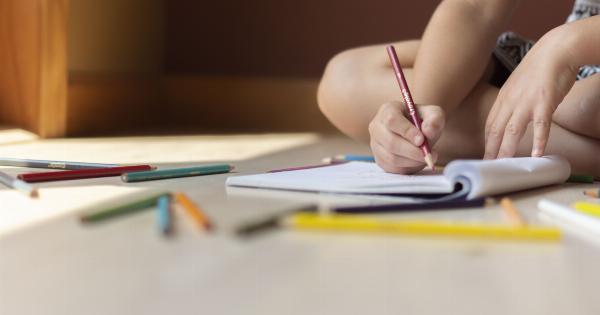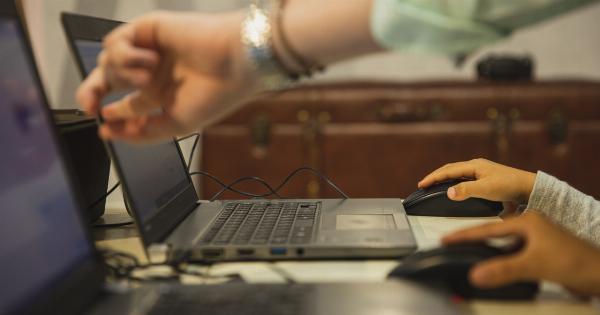Fine motor skills refer to the coordination of small muscles in the hands, fingers, and wrists that enable us to perform precise movements. These skills are essential for tasks such as writing, tying shoelaces, buttoning clothes, and using utensils.
However, some children may face developmental hurdles when it comes to developing fine motor skills. This article explores common challenges faced in fine motor skill development and offers suggestions for overcoming these hurdles.
1. Delayed Grasping
One of the early developmental milestones in fine motor skills is the ability to grasp objects. Some children may experience a delay in learning this skill, which can impact their ability to perform tasks that require precise hand movements.
To help children overcome this hurdle, it is important to provide them with age-appropriate toys and objects that encourage grasping and picking up. Activities such as playing with building blocks, squeezing stress balls, and using finger puppets can help strengthen their hand muscles and improve their grasping abilities.
2. Poor Hand-Eye Coordination
Hand-eye coordination is crucial for executing precise hand movements. Children who struggle with hand-eye coordination may face difficulties in activities such as catching a ball, using scissors, or threading beads.
To improve hand-eye coordination, activities that involve tracking and targeting, such as playing with a ball toss game or using a pegboard, can be beneficial. Encouraging activities like drawing, coloring, and playing with puzzles can also enhance hand-eye coordination skills.
3. Weak Finger Strength
Inadequate finger strength can hinder a child’s ability to perform tasks that require fine motor skills. Weak finger muscles may cause difficulty in activities such as writing, zipping clothes, and manipulating small objects.
To strengthen finger muscles, activities like squeezing playdough, using clothespins, playing with finger puppets, and playing with small toys can be beneficial. Activities that involve pinching, picking, and pushing motions can help develop finger strength.
4. Lack of Pincer Grip
The pincer grip is the ability to hold an object using the thumb and index finger. Children who struggle with developing this grip may face challenges in tasks such as picking up small objects or using utensils.
Combining activities that require the pincer grip, such as picking up small objects with tweezers or using tongs to transfer items, can aid in developing this skill. Encouraging activities like tearing paper, scrunching tissue paper, and playing with small beads can also help promote the pincer grip.
5. Difficulty with Handwriting
Handwriting requires a combination of several fine motor skills, including hand strength, hand-eye coordination, and finger dexterity.
Some children may face challenges in forming letters, maintaining proper grip, or keeping a consistent size and shape of letters. Providing opportunities for practicing handwriting through tracing letters, coloring within lines, using stencils, and engaging in various writing activities can help improve handwriting skills.
Additionally, using writing tools with appropriate grips, such as pencil grips or adapted pens, can assist children in maintaining a proper grip.
6. Poor Scissor Skills
Using scissors requires specific fine motor skills, including bilateral coordination and hand strength. Children who struggle with scissors may have difficulty cutting along lines or making precise cuts.
To develop scissor skills, providing child-safe scissors with rounded tips and engaging in activities like cutting playdough, cutting paper strips, or cutting along dotted lines can help improve their abilities. Guided practice, modeling proper scissor technique, and gradually increasing the complexity of tasks can also be effective techniques.
7. Lack of Fine Motor Control
Some children may exhibit poor control over their fine motor movements, leading to difficulties in performing tasks that require accuracy and precision.
Activities that require controlled movements, such as using a dropper to transfer small objects, drawing within lines, or playing with construction toys, can help develop fine motor control. Providing opportunities for finger painting, tracing shapes, and participating in activities that involve manipulating small objects can also aid in improving fine motor control.
8. Challenges with Handwriting Speed
While some children may struggle with legible handwriting, others may face difficulties with the speed of their writing. Slow handwriting speed can negatively impact a child’s academic performance and productivity.
Encouraging activities that involve rapid hand movements, such as playing rhythm instruments, typing on a keyboard, using touch screens, or engaging in computer games that require quick responses can help improve handwriting speed. Gradual practice with timed writing tasks can also assist in increasing writing speed.
9. Inadequate Manipulation of Small Objects
Manipulating small objects requires precise finger movements and coordination. Children who struggle with this skill may face difficulties in activities such as picking up small beads, buttoning clothes, or using keys.
To improve manipulation of small objects, activities that involve sorting buttons, using tweezers to pick up small items, and playing with construction toys can be beneficial. Encouraging activities like opening and closing jars, using lacing cards, and playing with small building blocks can also assist in developing these skills.
10. Poor Finger Dexterity
Finger dexterity refers to the ability to make individualized movements with the fingers. Poor finger dexterity can impact tasks that require intricate finger movements, such as playing a musical instrument, typing, or buttoning clothes.
Engaging in activities such as playing with building blocks, solving puzzles, using chopsticks, or playing musical instruments can help improve finger dexterity. Activities that involve manipulating small objects using the fingers, such as picking up beads or coins, can also be beneficial.































